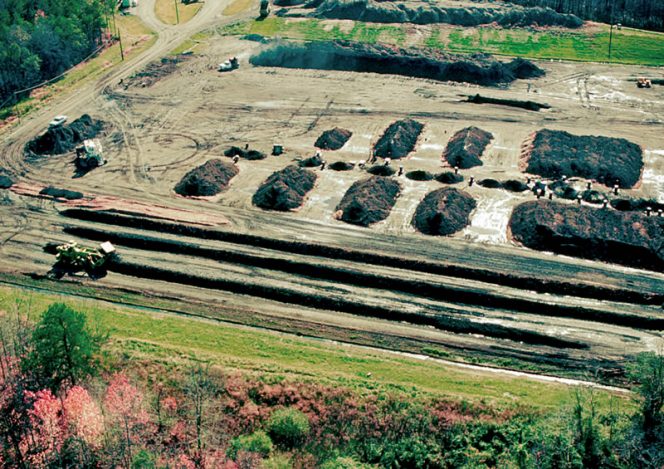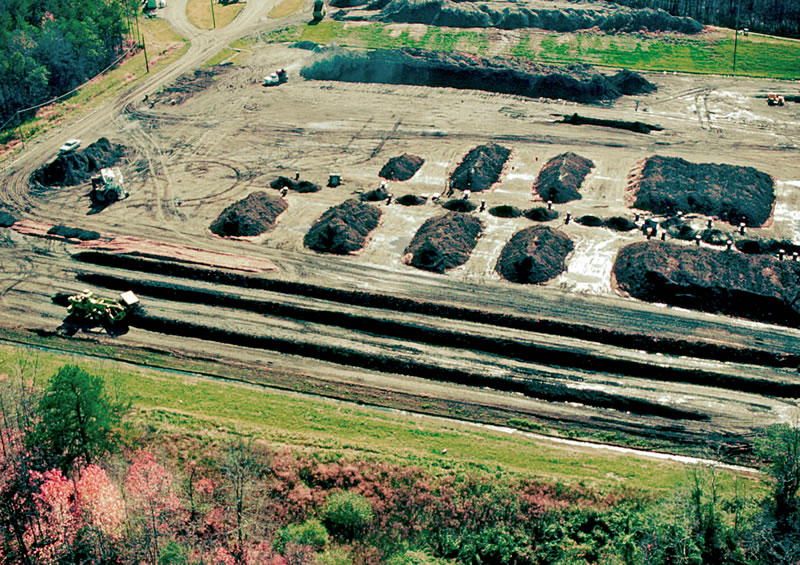Their incredible body of research was the lynchpin of the U.S. composting industry that persists today.
BioCycle July 2019

 In the 1970s and before, biosolids were called sewage sludge. Back then, many coastal communities disposed of sewage sludge in the ocean. However, the U.S. EPA wanted to end this practice and create safe land-based uses for the material. To assist in these efforts, they employed a “brain trust” of researchers at the Biological Waste Management Laboratory at the USDA’s Beltsville (MD) Agricultural Research Center. In 1972, the Laboratory staff started research on the composting of sewage sludge. “All the work was supported by USDA funding for our salaries, but all supplies, technicians, and construction were funded by EPA through the grant program to DC-Blue Plains, and then through Maryland Environmental Service,” recalls Dr. Rufus Chaney, one of the staff members.
In the 1970s and before, biosolids were called sewage sludge. Back then, many coastal communities disposed of sewage sludge in the ocean. However, the U.S. EPA wanted to end this practice and create safe land-based uses for the material. To assist in these efforts, they employed a “brain trust” of researchers at the Biological Waste Management Laboratory at the USDA’s Beltsville (MD) Agricultural Research Center. In 1972, the Laboratory staff started research on the composting of sewage sludge. “All the work was supported by USDA funding for our salaries, but all supplies, technicians, and construction were funded by EPA through the grant program to DC-Blue Plains, and then through Maryland Environmental Service,” recalls Dr. Rufus Chaney, one of the staff members.
In addition to Chaney (heavy metals, soils), this team of researchers included James Menzies (First Lab Leader who started cooperation with Blue Plains and sought George Willson’s assistance with composting); James Parr (next leader who lead most of the work with biosolids and composting for USDA); Patricia Millner (microflora, fungi, composting); Eliot Epstein (composting); Wylie Burge (pathogens persistence and kill during composting); John Walker (subleader; agronomy; utilization); Larry Sikora (N and P plant availability, etc.); Cecil Tester (N and P); Sharon Hornick (beneficial use); Susan Sterrett (use in potting media; use to reduce lead risk from urban soils); Frank Gouin (use in
potting media, horticultural production); and Walter Armiger (use in revegetation of coal mine spoils). Jim Parr captured their lessons learned in a 2004 BioCycle article, “How Novices Became Experts On The Compost Learning Curve.”
Their incredible body of research was the lynchpin of the U.S. composting industry that persists today. Not only did they figure out how to efficiently and safely “windrow” compost, they developed the Beltsville Aerated (Static) Pile Composting Method. Their research addressed destruction of biological pathogens in composting feedstocks. In 1984, the Beltsville team published the important USDA Bulletin, “Utilization of Sewage Sludge Compost as a Soil Conditioner and Fertilizer for Plant Growth.” This compendium referenced compost end use research completed by their internal team, as well as university researchers such as Drs. Frank Gouin and Harry Hoitink (icons in their own right). Of course, they published much more end use research as time went on, and in doing so, gave people entering the industry confidence that composting could be used to recycle organic “wastes,” as well as safely use the resultant products. This early scientific footing helped make our industry what it is today.
— Ron Alexander, R. Alexander Associates Inc.
Continue reading














